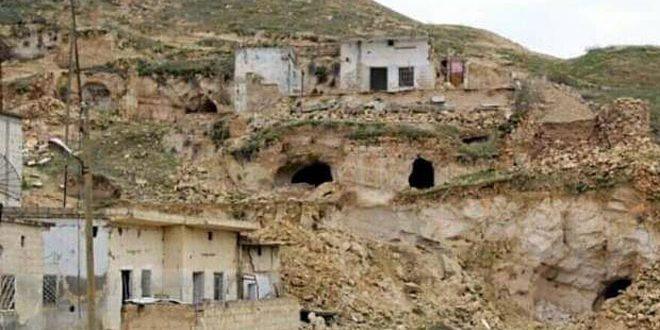The village of Latamneh, is a unique site located in the north of Hama province as it is one of the rare historical and archaeological sites in the world which chronicled the first existence of the early and middle Stone Age humans ..
Syrian and foreign excavation missions have found , during several excavations in the village a skeleton, bones, fossil remains and flint fragments dating back to one million years BC , the epoch which the archaeologists call the Pleistocene era extending from 3 million years until 10,000 years BC.
“ Al-Latamneh is considered one of the most important and rarest sites of its kind in the world, where the river bed of the Orontes River yielded the remains of human camp well-preserved within layers from sand and other matter that the river had deposited” according to the researcher Naser Flehan.
Flehan indicated that this human camp had been inhabited for a short time by a small group of humans who were gatherers of wild fruits such as hawthorn, almonds and pistachios, and hunters of wild animal including horses, deer, and rhinoceros. He made it clear that this group lived in the Orontes basin about half a million years ago and their tools consisted of axes, cleavers, and scrapers, and they built their cottages from stones and branches, using fire for warmth, light, protection, and cooking..
 On the other hand, al-Latamneh village is adjacent to Khattab village as well as Qarmashy site where the studies were conducted by the Syrian missions in the 1960s and published in Syrian archaeological journals, and many researchers have written about these sites in terms of the first human settlement areas which date back to 600,000-200,000 BC.
On the other hand, al-Latamneh village is adjacent to Khattab village as well as Qarmashy site where the studies were conducted by the Syrian missions in the 1960s and published in Syrian archaeological journals, and many researchers have written about these sites in terms of the first human settlement areas which date back to 600,000-200,000 BC.
It is mentioned that the last mission that excavated in the region was a Syria-Germany mission working between 2004 and 2009, when it discovered that human settlement took place from around 400 to 200 thousand years BC.
Rawaa Ghanam

